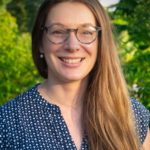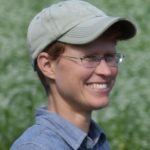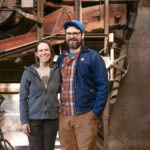Your financial gift to PFI will bring us closer to our vision of resilience. Please give today!
Shared Learning Calls
Join Us for Small Grains Shared Learning Calls
Small grains shared learning calls are conference calls where you can listen and talk with other farmers and small grains enthusiasts. Each month our speaker(s) share experiences and production practices for 40 minutes, and then we open the floor for questions and discussion. Shared learning calls usually take place on the first Friday of the month from noon-1 p.m.
We use Zoom to host these virtual events. To participate in shared learning calls, you can either join by phone or computer.
Receive reminders about future shared learning calls and get resources on small grain production delivered straight to your inbox by signing up for our monthly Small Grains News newsletter.
If you’d like to share suggestions for future shared learning call topics or speakers, please email Solveig Orngard at solveig.orngard(@)practicalfarmers(dot)org.
Next Shared Learning Call: Dec. 5
The Creation of Bickford Wheat
For the past 10 years, a network of seed breeders, farmers, millers and bakers have been working together to develop a new variety of winter wheat designed specifically for resilience on Midwest organic farms and excellent performance in sourdough bread production. Plant breeder and professor, Julie Dawson, of UW-Madison, farmer Halee Wepking of Meadowlark Farm and baker Kirk Smock of ORIGIN Breads will share the role they and others have played in this unique process and plans for the future. Alyssa Hartman, executive director of Artisan Grain Collaborative, will help moderate the discussion.
 Alyssa Hartman is executive director of Artisan Grain Collaborative, a regional network of farmers, processors, end-users and advocates working to strengthen a regenerative grainshed in the Midwest.
Alyssa Hartman is executive director of Artisan Grain Collaborative, a regional network of farmers, processors, end-users and advocates working to strengthen a regenerative grainshed in the Midwest.
 Julie Dawson is a professor at the University of Wisconsin-Madison. She is the state extension specialist for regional food systems and does applied research for growers serving local markets.
Julie Dawson is a professor at the University of Wisconsin-Madison. She is the state extension specialist for regional food systems and does applied research for growers serving local markets.
 Halee and John Wepking own Meadowlark Organics & Meadowlark Community Mill in Ridgeway, Wisconsin. They work to create direct grain markets, helping farmers maximize profitability and keep their grains within the foodshed.
Halee and John Wepking own Meadowlark Organics & Meadowlark Community Mill in Ridgeway, Wisconsin. They work to create direct grain markets, helping farmers maximize profitability and keep their grains within the foodshed.
 Kirk Smock is the owner and head baker at ORIGIN Breads, a small bakery in Madison, Wisconsin, that specializes in naturally leavened sourdough breads, pastries and pizzas made only with regionally grown organic and stone milled grains.
Kirk Smock is the owner and head baker at ORIGIN Breads, a small bakery in Madison, Wisconsin, that specializes in naturally leavened sourdough breads, pastries and pizzas made only with regionally grown organic and stone milled grains.
Schedule
Save these future shared learning call dates on your calendar:
- Jan. 16, 2026
- Feb. 6, 2026
- March 6, 2026
- April 10, 2026
Blog Recaps
Most shared learning calls are followed up with a blog recap. Read through our recent shared learning call recap blogs to see what you missed:
- When Conditions Are Right: Exploring Prevention and Management of Fusarium Head Blight in Oats
- Soil Health Strategies for Producing Higher Quality Crops
- Equipment for Planting Cover Crops and Frost Seeding
- Vertical Integration for Future Growth of a Malting Operation
- Finding Your Small-Grain Market Through Relationship Building
- Exploring Opportunities for Marketing Wheat Straw
There’s plenty more than just the handful of blogs listed above! Check out the latest small grains resources.
Acknowledgements
This material is based upon work supported by the U.S. Department of Agriculture and National Fish and Wildlife Foundation, under grant ID 2004.22.075401 and agreement number 75401.
Any opinions, findings, conclusions, or recommendations expressed in this publication are those of the author(s) and do not necessarily reflect the views of the U.S. Department of Agriculture. In addition, any reference to specific grants or types of products or services does not constitute or imply an endorsement by the U.S. Department of Agriculture for those products or services.
This project is also made possible through a grant from the National Fish and Wildlife Foundation, with support from ADM re:generations.
This work is also supported by Agriculture and Food Research Initiative Competitive Grants Program Sustainable Agricultural Systems (SAS) grant no. F9000315202081 from the USDA National Institute of Food and Agriculture.
Any opinions, findings, conclusions, or recommendations expressed in this publication are those of the author(s) and do not necessarily reflect the view of the U.S. Department of Agriculture.
